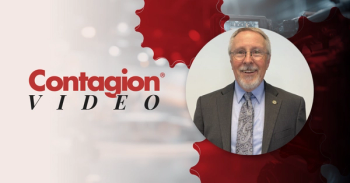
Repurposing Drugs to Tackle Emerging Infectious Diseases
Robert Malone, MD, MS, CEO/CSO of Atheric Pharmaceuticals, LLC, discusses the benefits of repurposing drugs for emerging infectious diseases rather than going down the very long, costly road of developing new ones.
Robert Malone, MD, MS, CEO/CSO of Atheric Pharmaceuticals, LLC, discusses the benefits of repurposing drugs for emerging infectious diseases rather than going down the very long, costly road of developing new ones.
Interview Transcript (slightly modified for readability)
“What we’ve learned in the modern world is that the timelines for developing a new drug and the cost of either a new drug or a vaccine keep going up and up and up. So, unfortunately we’re now at a point where, to bring a new drug to market, or a new vaccine to market, it takes more than 10 years, and typically more than a billion dollars. Now, we can talk about why that is and that’s kind of not our [purpose] to solve the problems with regulatory strategies, but the truth is that it’s just become a burden.
What we’ve seen, particularly with infectious disease and emerging infectious disease, is that the pharmaceutical companies can’t make a profit on any of these emerging infectious diseases, which is why they’re increasingly disinterested; we call it ‘outbreak fatigue.’ So, the whole business model of how we develop medical countermeasures for emerging infectious diseases is broken.
One of the only ways out of the woods that many people have started to think about and develop, both for oncology and infectious disease, is to recognize that we now have a rich pharmacopeia of compounds with different mechanisms of action and the [National Institutes of Health] NIH and others have done a great job of testing the various mechanisms of action and listing this all in a public database, so you can find this on
Now, it’s not fast enough because as Zika teaches us, some of these emerging infectious diseases move extremely rapidly. In our case, it’s taken us about a year to just come up with solid compounds that are good candidates that meet all of our criteria (of being able to be used in pregnancies, etc.) but that’s the reason for repurposing: our current business model in regulatory pathways for new drug and new vaccine development are a complete mismatch for emerging infectious disease in terms of time and cost and we have to find a new solution.
Also, behind that is the threat of engineered pathogens, which is really a very similar type of threat, so for all of these things, the government, the World Health Organization, all nations now, really have to find a better system. We hope that what we’ve done in learning how to repurpose drugs, working with the army and the National Cancer Institute, is giving us lessons and a path forward that will allow us to do this much more efficiently.”
Newsletter
Stay ahead of emerging infectious disease threats with expert insights and breaking research. Subscribe now to get updates delivered straight to your inbox.

















































































































































































































































































